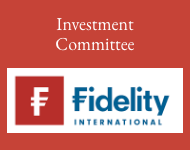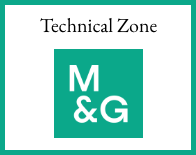Darius McDermott, managing director of FundCalibre and Chelsea Financial Services, looks at the four D’s affecting America’s prospects going forward and why this may be presenting opportunities in Asia.
US stocks have led global markets for over a decade, driven by tech giants and strong earnings, resulting in high valuations compared to other regions. It has literally been a one-horse race, with the S&P 500 rising almost 700% in the past 15 years*. However, they are now trading at a significant premium to global markets.
A recent update from Invesco put the S&P 500’s forward Price to Earnings (P/E) ratio at around 24x, compared to 16x for developed ex-U.S. markets**. Contrast that with Asia, which looks significantly cheaper and has a host of growth engines behind it.
But, like the rest of the world, Asia has been lost in the shuffle, particularly given China’s challenges in the past four years. The pressures on the US economy are very clear; Guinness Asian Equity Income manager Edmund Harriss points to the rising US debt and the growing deficit (the first two D’s) the economy has to grapple with.
He says: “The US raise about $5 trillion in tax, but spend about $5.7trn. So they have to borrow $700 billion to fund that gap, as well as a further $900bn to pay the interest on that debt. This creates a significant challenge because to reverse that requires contractionary policies. The US has grown very quickly over the last 10-20 years, driven by consumption and the ability to spend beyond their means. This is coming to an end and the implication is that US equities are going to find it harder going in an economy that is coming under pressure and fiscal policy will need to contract.”
It is hard to judge Asian markets as a single bloc these days. China has started to rebound but confidence is far from restored, India – despite a correction – still looks expensive (although perhaps justifiably so). What I will say is there are plenty of opportunities across countries and sectors for active investors.
Donald (the third D) Trump has obviously tried to re-write the playbook on world trade, and has created significant uncertainty in financial markets as a result. The pressure will be mixed in various regions based on exports vs. domestic stories and the agreements eventually reached once the 90-day ceasefire ends. There are clearly still plenty of unknowns surrounding the general outcome, particularly with China, but the MSCI AC Asia ex-Japan index has recovered from the news and is now up more than 4% since tariffs were officially announced (it was down 10% during the height of market volatility)**.
What has persisted is the weakness of the US dollar (the final D!). This is a boon for the Asian market, with the lower levels already leading to appreciation in regional currencies such as the Korean won and the New Taiwan dollar earlier this year.
Crucially, there is headroom for Asian economies should we see a slowdown in growth. Nearly 90% of Asian countries have maintained headline inflation rates within their central banks’ target ranges over the past five months. With fiscal positions in good health across the region, it gives governments the ability to respond to any challenges to growth.
A diverse range of opportunities
Fidelity Asia Pacific Opportunities manager Anthony Srom says there remain a number of opportunities across the region, but warns a disciplined approach is needed, citing concerns over a potential recession in the US. He has been adding to the likes of Indian financials and certain ASEAN markets to focus on undervalued regions and sectors.
He says: “ASEAN markets have grown from no representation in the portfolio a year ago to approximately 13% today. In some ways, these markets seem like the “forgotten child” of the region, overlooked despite being attractively valued. We now have significant positions in Thailand (CP All, Bangkok Dusit Medical) and Singapore (Sea Limited).”
He has also bolstered his exposure to copper based on the structural outlook, citing companies like MMG and Sandfire Resources being significantly below previous price levels***.
Schroder Asian Alpha Plus co-manager Abbas Barkhordar says while some markets are highly exposed to the global economic cycle, notably Korea and Taiwan, others such as India are much more domestically driven – providing opportunities. He says: “These include banks and insurers, which are growing as the expanding financial services industry reaches new customers in emerging markets such as India, the Philippines and Indonesia. Rising domestic consumerism is also driving demand for consumer goods, domestic travel, healthcare and digital services.”
M&G Asian manager David Perrett says while unsettling on a day-to-day basis, volatility can create a series of interesting opportunities for disciplined bottom-up investors. He has been targeting Hong Kong stocks, particularly in the mid-cap market, as well as Indonesian stocks, where he says near-term economic and political concerns created what appears to be excessive levels of risk premiums^.
Perrett says the initial tariff turbulence has built upon the ongoing correction in technology stocks across the region. He says: “Our perspective has been that there are a number of technology stocks which had performed well last year as AI proxies, but this outperformance was likely not appropriate over the medium term, given they lacked a lasting “moat” for their businesses.
“A number of these stocks have corrected sharply year to date, particularly in South Korea and Taiwan. More interestingly, there has now been substantial weakness in genuine regional AI leaders and this is creating an interesting set up for longer-term investors.”
In April, the International Monetary Fund downgraded its growth outlook for Asia to 3.9% in 2025 (4% in 2026)^^, principally due to its greater vulnerability to the uncertain trade environment and weaker-than-expected global demand. But there will still be plenty of opportunities for bottom-up investors given the varying outlook across the region. The Asian economy also looks better prepared for ongoing volatility from a fiscal perspective – while the long-term domestic story remains as strong as ever.
*Source: FE Analytics, total returns in pounds sterling, 10 June 2010 to 10 June 2025
**Source: FE Analytics, total returns in pounds sterling, 2 April 2025 to 9 June 2025
***Source: fund update, May 2025
^Source: M&G, April 2025
^^Source: International Monetary Fund, April 2025
Past performance is not a reliable guide to future returns. You may not get back the amount originally invested, and tax rules can change over time. Darius’s views are his own and do not constitute financial advice.
Main image: jean-beller-AdmO8NNe9gU-unsplash





































